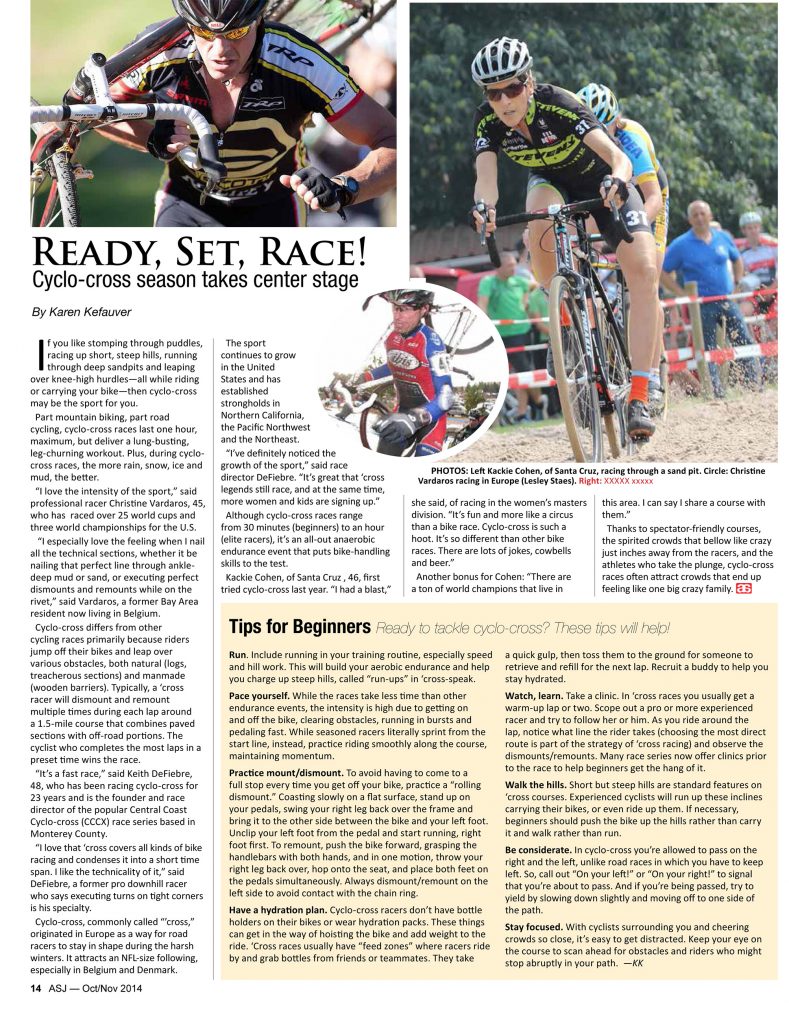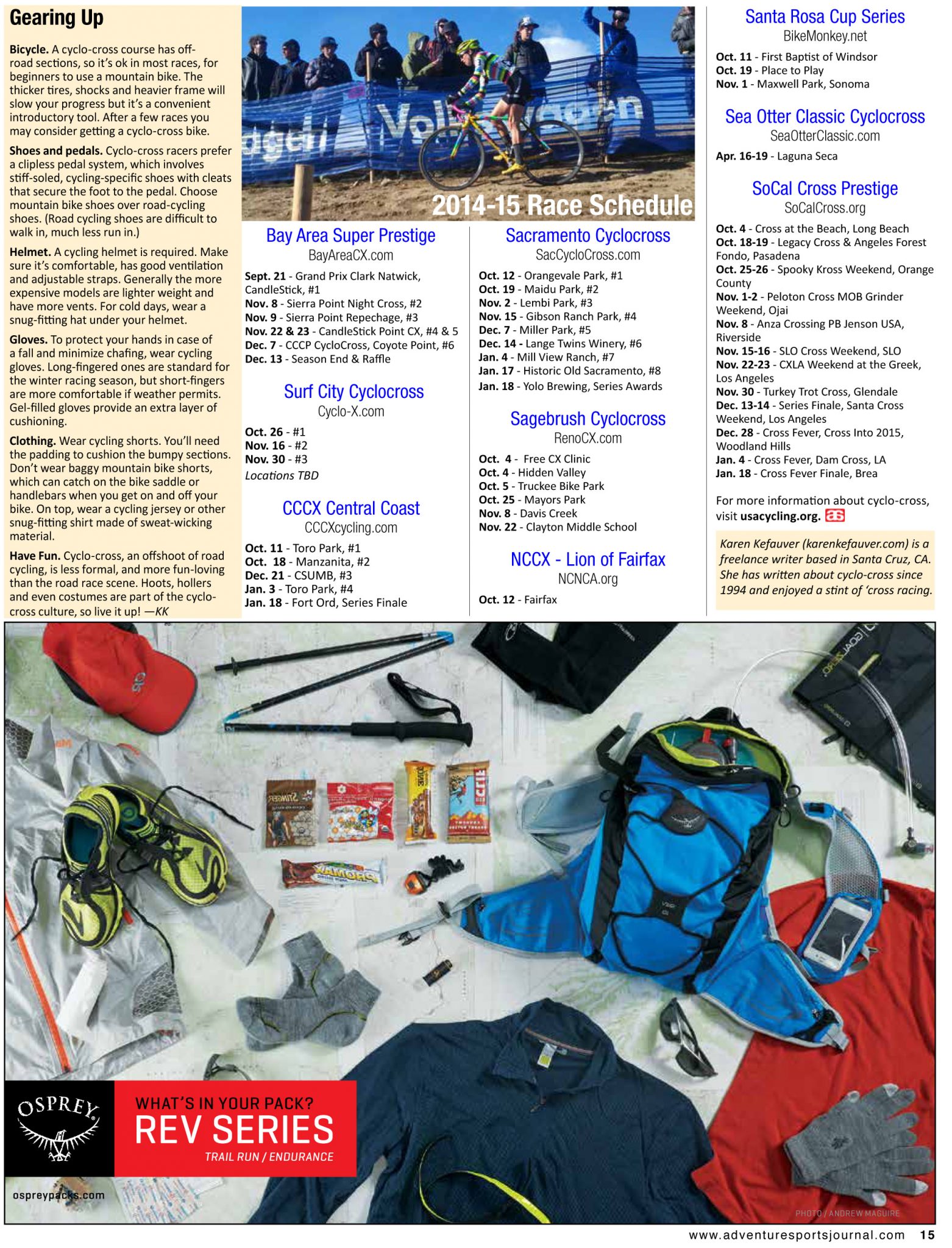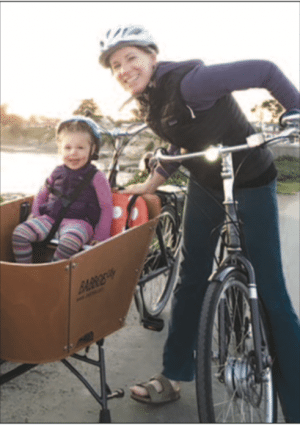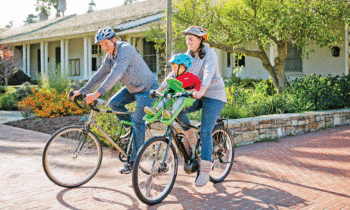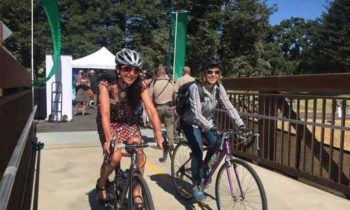September 2014
Adventure Sports Journal
by Karen Kefauver
If you like stomping through puddles, racing up short, steep hills, running through deep sandpits and leaping over knee-high hurdles—all while riding or carrying your bike—then cyclo-cross may be the sport for you.
Part mountain biking, part road cycling, cyclo-cross races last one hour, maximum, but deliver a lung-busting, leg-churning workout. Plus, during cyclo-cross races, the more rain, snow, ice and mud, the better.
“I love the intensity of the sport,” said professional racer Christine Vardaros, 45, who has raced over 25 world cups and three world championships for the U.S.
“I especially love the feeling when I nail all the technical sections, whether it be nailing that perfect line through ankle-deep mud or sand, or executing perfect dismounts and remounts while on the rivet,” said Vardaros, a former Bay Area resident now living in Belgium.
Cyclo-cross differs from other cycling races primarily because riders jump off their bikes and leap over various obstacles, both natural (logs, treacherous sections) and manmade (wooden barriers). Typically, a ‘cross racer will dismount and remount multiple times during each lap around a 1.5-mile course that combines paved sections with off-road portions. The cyclist who completes the most laps in a preset time wins the race.
“It’s a fast race,” said Keith DeFiebre, 48, who has been racing cyclo-cross for 23 years and is the founder and race director of the popular Central Coast Cyclo-cross (CCCX) race series based in Monterey County.
“I love that ‘cross covers all kinds of bike racing and condenses it into a short time span. I like the technicality of it,” said DeFiebre, a former pro downhill racer who says executing turns on tight corners is his specialty.
Cyclo-cross, commonly called “’cross,” originated in Europe as a way for road racers to stay in shape during the harsh winters. It attracts an NFL-size following, especially in Belgium and Denmark.
The sport continues to grow in the United States and has established strongholds in Northern California, the Pacific Northwest and the Northeast.
“I’ve definitely noticed the growth of the sport,” said race director DeFiebre. “It’s great that ‘cross legends still race, and at the same time, more women and kids are signing up.”
Although cyclo-cross races range from 30 minutes (beginners) to an hour (elite racers), it’s an all-out anaerobic endurance event that puts bike-handling skills to the test.
Kackie Cohen, of Santa Cruz , 46, first tried cyclo-cross last year. “I had a blast,” she said, of racing in the women’s masters division. “It’s fun and more like a circus than a bike race. Cyclo-cross is such a hoot. It’s so different than other bike races. There are lots of jokes, cowbells and beer.”
Another bonus for Cohen: “There are a ton of world champions that live in this area. I can say I share a course with them.”
Thanks to spectator-friendly courses, the spirited crowds that bellow like crazy just inches away from the racers, and the athletes who take the plunge, cyclo-cross races often attract crowds that end up feeling like one big crazy family.
Tips for Beginners Ready to tackle cyclo-cross? These tips will help!
Run. Include running in your training routine, especially speed and hill work. This will build your aerobic endurance and help you charge up steep hills, called “run-ups” in ‘cross-speak.
Pace yourself. While the races take less time than other endurance events, the intensity is high due to getting on and off the bike, clearing obstacles, running in bursts and pedaling fast. While seasoned racers literally sprint from the start line, instead, practice riding smoothly along the course, maintaining momentum.
Practice mount/dismount. To avoid having to come to a full stop every time you get off your bike, practice a “rolling dismount.” Coasting slowly on a flat surface, stand up on your pedals, swing your right leg back over the frame and bring it to the other side between the bike and your left foot. Unclip your left foot from the pedal and start running, right foot first. To remount, push the bike forward, grasping the handlebars with both hands, and in one motion, throw your right leg back over, hop onto the seat, and place both feet on the pedals simultaneously. Always dismount/remount on the left side to avoid contact with the chain ring.
Have a hydration plan. Cyclo-cross racers don’t have bottle holders on their bikes or wear hydration packs. These things can get in the way of hoisting the bike and add weight to the ride. ‘Cross races usually have “feed zones” where racers ride by and grab bottles from friends or teammates. They take a quick gulp, then toss them to the ground for someone to retrieve and refill for the next lap. Recruit a buddy to help you stay hydrated.
Watch, learn. Take a clinic. In ‘cross races you usually get a warm-up lap or two. Scope out a pro or more experienced racer and try to follow her or him. As you ride around the lap, notice what line the rider takes (choosing the most direct route is part of the strategy of ‘cross racing) and observe the dismounts/remounts. Many race series now offer clinics prior to the race to help beginners get the hang of it.
Walk the hills. Short but steep hills are standard features on ‘cross courses. Experienced cyclists will run up these inclines carrying their bikes, or even ride up them. If necessary, beginners should push the bike up the hills rather than carry it and walk rather than run.
Be considerate. In cyclo-cross you’re allowed to pass on the right and the left, unlike road races in which you have to keep left. So, call out “On your left!” or “On your right!” to signal that you’re about to pass. And if you’re being passed, try to yield by slowing down slightly and moving off to one side of the path.
Stay focused. With cyclists surrounding you and cheering crowds so close, it’s easy to get distracted. Keep your eye on the course to scan ahead for obstacles and riders who might stop abruptly in your path. —KK
Gearing Up
Bicycle. A cyclo-cross course has off-road sections, so it’s ok in most races, for beginners to use a mountain bike. The thicker tires, shocks and heavier frame will slow your progress but it’s a convenient introductory tool. After a few races you may consider getting a cyclo-cross bike.
Shoes and pedals. Cyclo-cross racers prefer a clipless pedal system, which involves stiff-soled, cycling-specific shoes with cleats that secure the foot to the pedal. Choose mountain bike shoes over road-cycling shoes. (Road cycling shoes are difficult to walk in, much less run in.)
Helmet. A cycling helmet is required. Make sure it’s comfortable, has good ventilation and adjustable straps. Generally the more expensive models are lighter weight and have more vents. For cold days, wear a snug-fitting hat under your helmet.
Gloves. To protect your hands in case of a fall and minimize chafing, wear cycling gloves. Long-fingered ones are standard for the winter racing season, but short-fingers are more comfortable if weather permits. Gel-filled gloves provide an extra layer of cushioning.
Clothing. Wear cycling shorts. You’ll need the padding to cushion the bumpy sections. Don’t wear baggy mountain bike shorts, which can catch on the bike saddle or handlebars when you get on and off your bike. On top, wear a cycling jersey or other snug-fitting shirt made of sweat-wicking material.
Have Fun. Cyclo-cross, an offshoot of road cycling, is less formal, and more fun-loving than the road race scene. Hoots, hollers and even costumes are part of the cyclo-cross culture, so live it up! —KK
Bay Area Super Prestige
BayAreaCX.com
Sept. 21 – Grand Prix Clark Natwick,CandleStick, #1
Nov. 8 – Sierra Point Night Cross, #2
Nov. 9 – Sierra Point Repechage, #3
Nov. 22 & 23 – CandleStick Point CX, #4 & 5
Dec. 7 – CCCP CycloCross, Coyote Point, #6
Dec. 13 – Season End & Raffle
Surf City Cyclocross
Cyclo-X.com
Oct. 26 – #1
Nov. 16 – #2
Nov. 30 – #3
Locations TBD
CCCX Central Coast
CCCXcycling.com
Oct. 11 – Toro Park, #1
Oct. 18 – Manzanita, #2
Dec. 21 – CSUMB, #3
Jan. 3 – Toro Park, #4
Jan. 18 – Fort Ord, Series Finale
Sacramento Cyclocross
SacCycloCross.com
Oct. 12 – Orangevale Park, #1
Oct. 19 – Maidu Park, #2
Nov. 2 – Lembi Park, #3
Nov. 15 – Gibson Ranch Park, #4
Dec. 7 – Miller Park, #5
Dec. 14 – Lange Twins Winery, #6
Jan. 4 – Mill View Ranch, #7
Jan. 17 – Historic Old Sacramento, #8
Jan. 18 – Yolo Brewing, Series Awards
Sagebrush Cyclocross
RenoCX.com
Oct. 4 – Free CX Clinic
Oct. 4 – Hidden Valley
Oct. 5 – Truckee Bike Park
Oct. 25 – Mayors Park
Nov. 8 – Davis Creek
Nov. 22 – Clayton Middle School
NCCX – Lion of Fairfax
NCNCA.org
Oct. 12 – Fairfax
Santa Rosa Cup Series
BikeMonkey.net
Oct. 11 – First Baptist of Windsor
Oct. 19 – Place to Play
Nov. 1 – Maxwell Park, Sonoma
Sea Otter Classic Cyclocross
SeaOtterClassic.com
Apr. 16-19 – Laguna Seca
SoCal Cross Prestige
SoCalCross.org
Oct. 4 – Cross at the Beach, Long Beach
Oct. 18-19 – Legacy Cross & Angeles Forest Fondo, Pasadena
Oct. 25-26 – Spooky Kross Weekend, Orange County
Nov. 1-2 – Peloton Cross MOB Grinder Weekend, Ojai
Nov. 8 – Anza Crossing PB Jenson USA, Riverside
Nov. 15-16 – SLO Cross Weekend, SLO
Nov. 22-23 – CXLA Weekend at the Greek, Los Angeles
Nov. 30 – Turkey Trot Cross, Glendale
Dec. 13-14 – Series Finale, Santa Cross Weekend, Los Angeles
Dec. 28 – Cross Fever, Cross Into 2015,Woodland Hills
Jan. 4 – Cross Fever, Dam Cross, LA
Jan. 18 – Cross Fever Finale, Brea
For more information about cyclo-cross, visit usacycling.org.
Karen Kefauver (karenkefauver.com) is a freelance writer based in Santa Cruz, CA. She has written about cyclo-cross since 1994 and enjoyed a stint of ‘cross racing.
